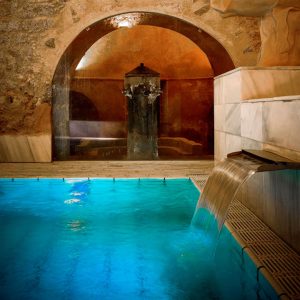Diverse Birdlife in Ambroz-Cáparra
Portada » Diverse Birdlife in Ambroz-Cáparra
Northern Extremadura is surrounded by an extensive mountain range. As part of the Central System, it acts as a dividing line between the northern and southern plateaus.
In the foothills of this mountain range on its southern slope, in the easternmost part of the region, lies the territory of Ambroz-Cáparra. Spanning over 90,000 hectares, this area features high mountains with elevations exceeding 2,000 metres, such as Pico Pinajarro (2,099 metres), as well as plateaus with elevations around 300 metres.
This variation in altitude is further influenced by the fact that the mountain range acts as a barrier, trapping the moisture carried by the winds from the Atlantic Ocean. The variation in humidity within the same territory means that some regions like Hervás receive up to 1,200 litres per m2 per year, whereas others like Guijo de Granadilla receive up to 680 litres per m2 per year.
Humidity levels also contribute to temperature variations which are linked to altitude and further shaped by the region’s diverse soil types. Granite soils of various origins gradually shift to slate and sandy soils within a 50-kilometre stretch from north to south.
And this is how the pillars that support the rich biodiversity of Ambroz-Cáparra are formed. Each combination of altitude, rainfall, temperature, and soil type creates to a unique natural ecosystem or one that is shaped by traditional agriculture and livestock practices.
In this blog post where we focus on birdlife, high mountain areas serve as spring habitats for the Bluethroat (Luscinia svecica), host historic nesting sites for the Golden Eagle (Aquila chrysaetos), and provide the increasingly rare mountain meadows needed by the Red-backed Shrike (Lanius collurio).
As we descend into areas with higher rainfall and milder temperatures dominated by dense forests, we find ideal nesting sites for the Golden Oriole (Oriolus oriolus) and the increasingly threatened European Honey Buzzard (Pernis apivorus). This summer raptor relies on the lush foliage of the chestnut and Pyrenean oak groves that thrive across the northern part of the region.
Continuing our descent in altitude and latitude, we come across the two main agro-silvopastoral systems characteristic of Extremadura – the dehesa and the traditional olive grove – that feature unique adaptations to thrive with very little rainfall and endure the extreme summer heat.
The holm oak, cork oak and olive groves, in harmony with the action of our livestock and agricultural inhabitants, provide the ideal environment for the Iberian Peninsula’s largest bird, the Black Vulture (Aegypius monachus) or the wintering Redwing Thrush (Turdus iliacus) to look for food.
As the journey continues, it follows the course of a series of watercourses such as rivers and reservoirs. These reservoirs, which capture and store rainfall, also sustain diverse wildlife. In the Ambroz-Cáparra region, the Gabriel y Galán Reservoir SPA is a prime example of water-related biodiversity. This Special Protection Area serves as an annual roost for over 2,000 common cranes (Grus grus), black-headed gulls (Chroicocephalus ridibundus), and lesser black-backed gulls (Larus fuscus). It is also a nesting site for the stunning great crested grebe (Podiceps cristatus) and the vulnerable black stork (Ciconia nigra). Consistent with the water theme, the fact that Ambroz-Cáparra has mountainous areas means that considerable volumes of pure water flow down its slopes where alder forests grow and where the enigmatic white-throated dipper (Cinclus cinclus) likes to live.
And the list goes on, because there are more than 200 species of birds registered in our territory, where nature lovers and birdwatchers can explore the dehesas, mountains, forests, riparian forests and reservoirs in the company of loved ones or with an expert guide. Don’t forget the binoculars!
Daniel Alvaro Alonso Rubio
Vive Ambroz
Visit more posts of the Blog
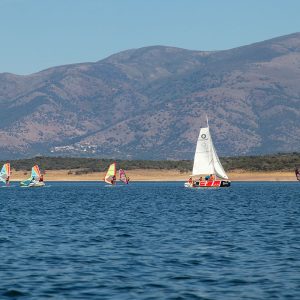
How to Navigate the Reservoirs of Cáceres
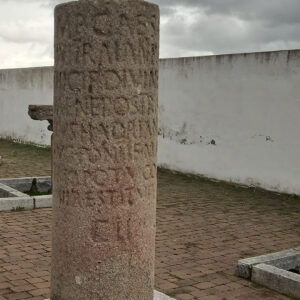
The Vía de la Plata Roman Road through the Caparra Mountains
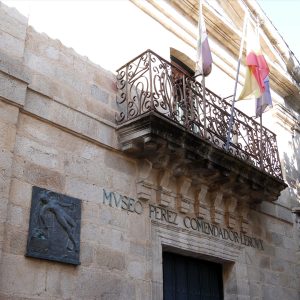
Perez Comendador-Leroux Museum
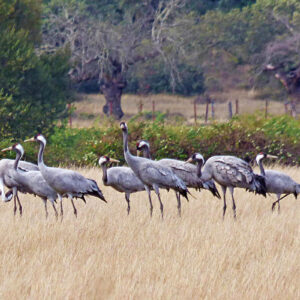
Diverse Birdlife in Ambroz-Cáparra

The Vía de la Plata Roman Road through Ambroz-Cáparra
